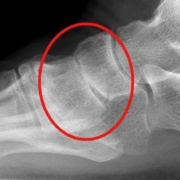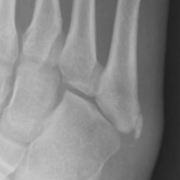Heel pain is the most common musculoskeletal problem seen by podiatrists. The most common cause of that heel pain is a condition known as plantar fasciitis. The problem with it being so common is that everyone is an expert on it and everyone has there own magic cure for it that they think everyone should use. There is no shortage of advice for people on how they should treat plantar fasciitis in social media, in eBooks, on YouTube and on forums. Every time you see someone ask how to get rid of plantar fasciitis you get plenty of advice of what worked for them, therefore you should try it. However, for each recommendation of a particular treatment that gets given, there is another person says that it did not work for them. Many of the treatments that you see recommended can not possibly work, but those people swear by it.
The issue is that the symptoms of plantar fasciitis always get better over the long term anyway, so did it get better because of the treatment or did it work as it was about to get better anyway? You only have to look at the placebo or no treatment groups in the published clinical trials on plantar fasciitis to see that there is always an improvement in that group. That improvement is because of natural history of the condition. This means that any treatment that does get used for plantar fasciitis really needs to have been shown to have done better than doing nothing or compared to a placebo in a clinical trial before we can say that it does definitively work.
Another way of looking at this is that if you have 100 people with plantar fasciitis and do nothing for them, then after, say 6 weeks, let say 30% of them are better naturally. What if you gave those 100 people a useless treatment? After 6 weeks with that useless treatment, 30% of them will be better because of that natural improvement. However, those 30 people will be totally convinced that the treatment worked when it had nothing to do with it. It will be very hard to convince them otherwise.
In clinical research, it will take, say 200 people and randomise them into two groups (so that each group has the same characteristics such as age, weight, duration of symptoms etc). One group (of about 100) will get the actual treatment being tested and the other group (also of about 100 people) will get a placebo or useless treatment or left alone. After the, for eg, 6 weeks, say, 30% of that placebo or no treatment group would be better, but so would 30% of the group that got the treatment being tested get better because of that natural history. What is needed in clinical research to show that a treatment works, is that is there more than 30% better in the group getting the treatment?
Can you see how treatments that might not work might appear to work by people who used them? It can be so deceptive. That is why we only use treatments for plantar fasciitis that we are confident do better than a placebo because the published scientific research tells us that they are better than doing nothing.













